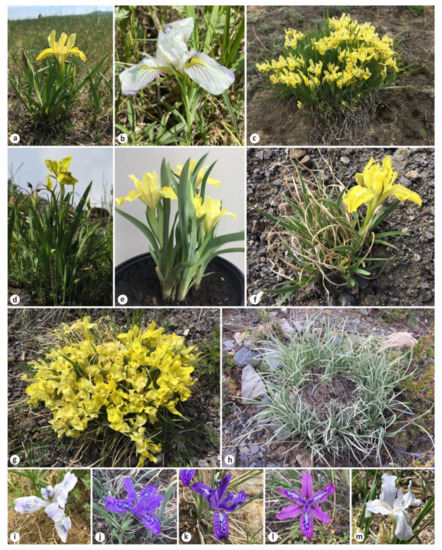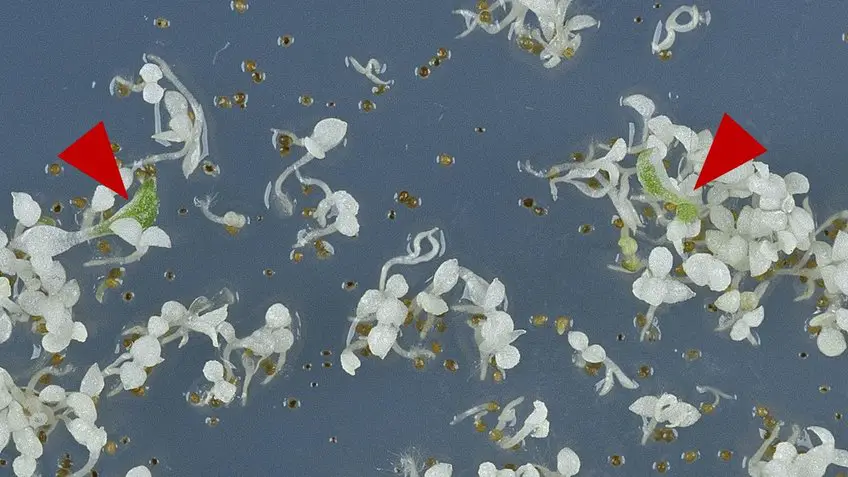The organelle found in plant cells but not animal cells is the chloroplast. Chloroplasts are vital for carrying out photosynthesis, which is the process by which plants produce their own food using energy from the sun.
These organelles contain chlorophyll, a pigment that gives plants their green color and also plays a crucial role in capturing light energy. In addition to chloroplasts, plant cells also have a cell wall that provides structural support and protection, which is absent in animal cells.
These unique features of plant cells enable them to carry out essential processes like photosynthesis and maintain their overall structure, which are critical for plant survival and growth.

Credit: www.mdpi.com
The Basics Of Cell Structure And Function
Plant growth is a complex process that requires the cooperation of several organelles found within a plant cell. Each organelle has a specific function that helps in the growth and development of the plant. Understanding the basics of cell structure and function is crucial in understanding the role of each organelle in plant growth.
The Cell Wall
The cell wall is a rigid, non-living structure that surrounds the cell membrane. It is made up of cellulose and provides support and protection to the cell. The cell wall also helps maintain cell shape during growth.
- The most prominent organelle in plant cells that contributes to plant growth is the cell wall.
The Cell Membrane
The cell membrane is a semi-permeable layer that encloses the cytoplasm of the cell. It consists of phospholipids and proteins that control the flow of materials in and out of the cell. The cell membrane plays a vital role in osmosis, which is the movement of water across a membrane.
- The cell membrane is essential for plant growth as it regulates the transport of nutrients and wastes.
The Chloroplasts
Chloroplasts are specialized organelles found in plant cells that contain pigment molecules called chlorophyll. Chlorophyll absorbs light energy and converts it into chemical energy through the process of photosynthesis.
- Chloroplasts are responsible for producing energy for plant growth and development.
The Vacuole
The vacuole is a large, membrane-bound organelle found in plant cells. It helps maintain cell turgor pressure, store nutrients and wastes, and regulate ph levels.
- Vacuoles play an important role in providing structural support to the cell during growth.
The Nucleus
The nucleus is often called the control center of the cell. It contains the genetic material of the plant in the form of dna. The nucleus also controls the activities of the cell through the production of rna and the synthesis of proteins.
- The nucleus is essential for plant growth as it contains the information required for plant cells to divide and grow.
Plant growth is a complex process that depends on the cooperation of several organelles found within a plant cell. Understanding the basics of cell structure and function is crucial in understanding the role of each organelle in plant growth. Each organelle plays a unique role in supporting plant growth and development.
Which Organelle Plays The Defining Role In Plant Growth?
The Organelle That Plays The Defining Role In Plant Growth
Plant growth and development involve numerous intricate processes, with plant cells using several organelles to sustain growth. However, one organelle, in particular, plays a defining role in plant growth- the chloroplasts. Here’s how:
Chloroplasts: The Powerhouses Of Plant Growth
Chloroplasts are the site of photosynthesis, crucial to plant nutrition and growth. They play a vital role in converting light energy into chemical energy (glucose) that the plant can use for essential functions, leading to growth. Here’s what you should know:
- Chloroplasts are plant-specific and are not found in animal cells.
- Chloroplasts contain chlorophyll, the pigment that gives plants their green color, and absorbs energy from sunlight.
- Chloroplasts are double-membrane-bound organelles that contain their own genetic material, ribosomes, and enzymes.
- Stomata, the tiny openings on the underside of leaves, allow carbon dioxide to enter and oxygen to exit the plant, making the carbon dioxide available for chloroplasts to use in photosynthesis.
- Chloroplasts are responsible for producing atp, the primary source of energy for most metabolic processes in cells.
Chloroplasts are responsible for providing the plant with energy and building blocks for growth, such as carbohydrates, amino acids, and lipids. Without chloroplasts, plant growth and development would not be possible.
Chloroplasts are the organelles responsible for powering plant growth exclusively. They provide the plant with energy and building blocks necessary for growth and development, making them critical for the survival of plants.
Other Factors That Influence Plant Growth
Plant growth is a complex process that involves several factors. While organelles, such as chloroplasts and mitochondria, play a critical role in powering plant growth, other factors also impact the overall growth of a plant. Let’s take a look at some of these factors.
Nutrients
Just like humans and animals, plants require specific nutrients to grow and remain healthy. These essential nutrients include nitrogen, phosphorus, potassium, calcium, sulfur, and magnesium. Without an adequate supply of these nutrients, plants cannot grow to their full potential. Some of these nutrients also play a crucial role in the functioning of organelles within plant cells.
Light
Light is a crucial factor in plant growth. It is through the process of photosynthesis, which takes place in chloroplasts, that plants convert light energy into chemical energy. This energy fuels the plant’s growth and development. Different plants require different levels of light, and it is important to provide them with the right amount of light to ensure optimal growth.
Water
Water is another crucial factor in plant growth. It is through the process of transpiration that plants uptake water from the soil and transport it to their cells. Water is also required for photosynthesis and the functioning of other organelles within plant cells.
Without enough water, plants can wilt and ultimately die.
Temperature
Temperature plays a crucial role in plant growth and development. Different plants have specific temperature requirements, and it is important to provide them with these optimal temperatures to ensure their growth. Too much heat or cold could inhibit the functioning of organelles and ultimately stunt the growth of the plant.
Soil
Soil provides plants with essential nutrients, water, and support. However, not all soils are created equal, and it is essential to provide plants with the right type of soil to facilitate their growth. Some plants require well-draining soils with a specific ph, while others can grow in different types of soils.
Pests And Diseases
Pests and diseases can also impact the growth of plants. They can feed on the plant’s leaves, sap, or roots, causing damage that can ultimately lead to stunted growth and death. It is important to monitor plants regularly and take appropriate measures to prevent and treat pest and disease problems.
Plant growth is a complex process that involves several factors. While organelles, such as chloroplasts and mitochondria, are critical to plant growth, other factors such as nutrients, light, water, soil, pests, and diseases also play a crucial role. By understanding these factors, we can provide plants with the optimal conditions for growth and healthy development.
Frequently Asked Questions For Which Organelle Is Found In Plant Cells But Not Animal
What Organelle Is Unique To Plant Cells?
Chloroplast is a unique organelle found only in plant cells. Chloroplasts contain chlorophyll that helps to capture light energy to drive photosynthesis, the process by which plants convert light energy, water, and carbon dioxide into glucose and oxygen.
What Is The Function Of The Chloroplast?
The function of the chloroplast is to capture light energy to initiate photosynthesis, the complex process by which plants synthesize their food. The chlorophyll pigment present in the thylakoid membrane helps in absorbing the light energy and converting it into chemical energy, which is used to produce glucose and oxygen.
Do Animal Cells Lack Chloroplasts?
Yes, animal cells lack chloroplasts. Chloroplasts are limited to photosynthetic organisms like plants, algae, and some bacteria. In some cases, animal cells obtain their nutrients from other organisms that go through photosynthesis in which they rely on, an example of this is the being that feeds on phytoplankton in the ocean.
Why Do Plant Cells Contain Chloroplasts?
Plants contain chloroplasts because they are organisms that undergo photosynthesis, which is a fundamental process that enables them to produce their food. Chloroplasts capture light energy to provide the energy for photosynthesis to occur, helping plants to synthesize glucose and oxygen.
How Do Chloroplasts Relate To Plant Structure?
Chloroplasts are essential to the plant structure. They are present in the mesophyll cell, which is where photosynthesis takes place. Chloroplasts also contain a pigment called chlorophyll that gives plants their green color. Without chlorophyll and therefore, without chloroplasts, the plant could not make their food, and their structure would be significantly impacted.
Can Plant Cells Live Without Chloroplasts?
No, as chloroplasts are essential to plant cells for photosynthesis and to produce their food, plant cells cannot survive without chloroplasts. Plant cells that lack chloroplasts are not able to manufacture their energy, thus they cannot support their growth.
Conclusion
As we conclude our discussion on organelles found in plant cells but not animal, we can see that these unique structures reflect the functional differences between these two types of cells. Chloroplasts, which are only found in plant cells, play a vital role in photosynthesis, allowing plants to convert solar energy into organic compounds.
Cell walls, another plant organelle, offer structure and support, while helping to regulate water content. Vacuoles are also unique to plant cells and act as storage centers for essential nutrients and waste products. Although animal cells lack these specific organelles, they contain others that perform similar vital functions.
Our understanding of these differences is critical to comprehending the unique cellular processes, which impact the health and vitality of our planet’s ecosystems. By developing a greater understanding of these fundamental components, we can continue to build upon our knowledge and appreciation of the wondrous world of plant and animal life.


